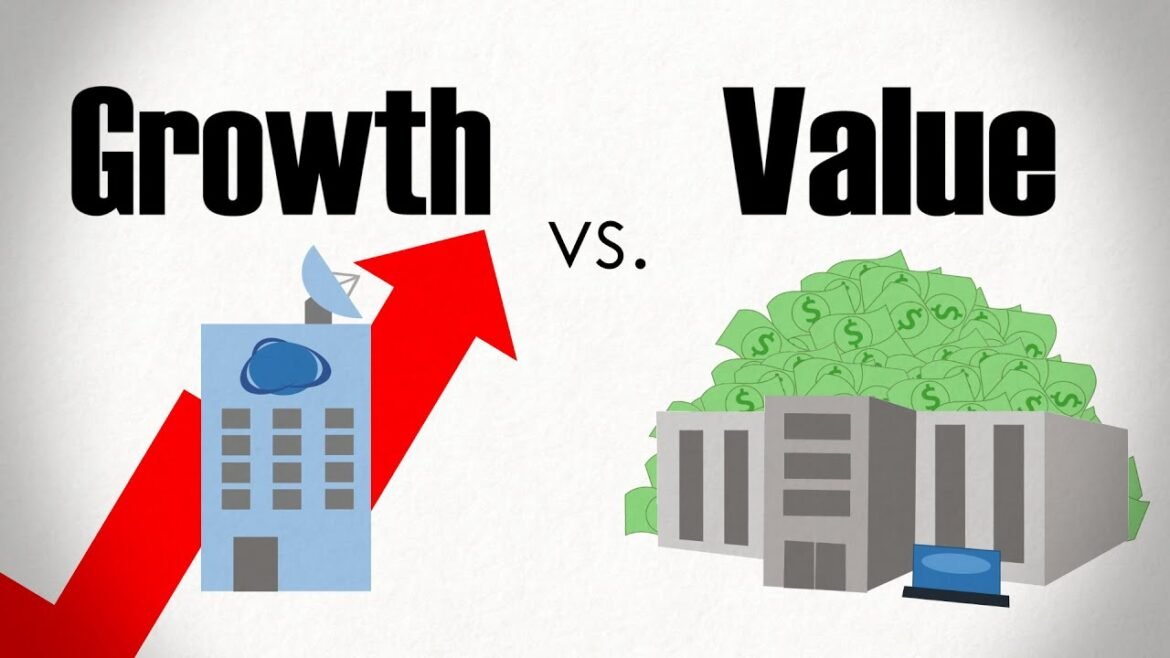Growth vs. Value Stocks: Which Is Right for You?
They are stocks in organizations you think will have higher growth rates of revenues, profits, and other fitness indices than the market average. Some of these businesses use the profits to reinvest in the business by investing in more research and development, new product lines, or expanding to new markets. There is a large focus not on current earnings or dividends but on what the company can do in the future.
Such companies are often located in rapidly developing industries like tech or healthcare. Those choosing growth-oriented stocks are willing to take more risk for the potential of receiving large amounts of gains. However, these stocks definitely look volatile, meaning that they are highly likely to experience volatility, especially when changes in expectations are made, and they do not meet the set expectations.
Exploring Value Stocks
Thus, value stocks can be considered cheap based on the company’s earnings per share or other value measures. They mainly possess direct business strategies, a consistent cash flow, and sometimes pay a consistent dividend. Graham and Dodd saw their investment as seeking value because they thought the market failed to correctly price these stocks.

They occur due to short-term business challenges, Market overreactions, or cyclic demises. Value investors prefer to hold their stakes for the long term, obtain income from other sources available through dividends, and have a lower risk of losing money because these companies’ stock prices remain relatively stable in the long run.
The Philosophy Behind Growth Investing
Growth investing is based on the idea of investing in companies that are presumably going to grow much faster than their peers and the market rate. This approach does not particularly focus on the companies’ current quantitative value but rather on their growth, performance, uniqueness, and possible market monopoly.
This strategy entails having more faith in the company’s ideas and ability to implement big thoughts. This is not unusual because such investors frequently invest in firms that operate at high P/E ratios, assuming that these will perform exponentially in the long run. While this poses more risks, the opportunity to make big profits is likely possible if the company’s promise is fulfilled.
The Philosophy Behind Value Investing
Value investing is a strategy for buying a stock at a bargain price. It uses a fundamental approach to identify undervalued securities. It presupposes that markets are not always efficient and that the prices of investments and securities will recover value over time.
This approach will require a more profound study and can take a long time to implement. Nevertheless, it proves necessary for investors to differentiate between such firms and determine whether they are genuinely undervalued or face some short-term and long-term problems. Another term used in the philosophy is the margin of safety, where the investor seeks to pay the value of the business as little as possible to ensure that there is limited downside risk involved.
Risk Factors for Growth Stocks
Growth stocks offer vigorous opportunities; therefore, they possess high risks. Their prices will fluctuate depending on their earnings, market conditions, or even macroeconomic circumstances in the periodical returns tendered per quarter. They may not have strong current earnings, which makes them easily respond to what investors are likely to expect from the firm.
However, a failure to meet performance targets greatly reduces the stock price even though the firm retains financial soundness. In periods of economic contraction, investors tend to shift their money to defensive, high-yield-paying stocks, which almost always puts growth stocks into the firing line.
Risk Factors for Value Stocks
In a way, value stocks are considered to have another type of risk. What is more, they are often low for a reason such as low industry relevancy or management problems. These are value traps that mislead investors into thinking that they have a good investment since the stock signifies a bad performance.
Additionally, value investing requires patience. Specifically, investors may not necessarily react to the company’s stock prices, leaving them low for longer periods. This can be frustrating, especially when a stock is in a market that anticipates short-term trends and acts accordingly.
Performance in Different Market Conditions
This stock thrives in bullish market situations since it is associated with growing corporations. There is optimism and more willingness to pay for growth and future earnings on shares on behalf of an investor. Such fields as technology and biotechnology usually take the lead in implementing commonly viewed trends.
In contrast, value stocks are usually more favorable during corrections or periods of a bear market. When there is doubt, investors seek companies with structures with balance sheets, steady earnings reports, and dividends. In uncertain periods, they act as a form of insurance.
Dividends and Income Potential
One of the main disparities between the growth and value factors is the dividends. Some value stocks pay some of the earned equities directly to the shareholders as dividends. These returns can be reinvested or used for income.

Growth stocks, on the other hand, tend to reinvest profits within the firm. The basic source of return for the shareholders is capital gains. This makes growth stocks suitable for capital gains in the long run, while value stocks will be suitable for investors who are interested in income.
Volatility and Emotional Investing
It is also a general characteristic that stocks that belong to the growth category are more volatile, which leads to an emotional approach to making decisions on the stock exchanges by the investors. Large losses in a short time may lead to selling stocks in large quantities due to panic, although the firm’s fundamentals may still be strong.
That being the case, it goes without saying that value stocks are relatively less psychologically demanding. They take time, but this can give a great sense of security. Knowing your investment temperament and the factors that would lead you to one of these two investing methods can be helpful.
Long-Term vs. Short-Term Goals
If the investor is long-term-oriented and willing to accept some fluctuations in their earnings, then growth stocks are more suitable for them. They can give great opportunities to get warm over the years for those who do not require income this year.
On this front, however, if value creation is not an objective and one aims to avoid loss of capital and look to income generation in the long term, then value stocks better fit a short-term investment horizon. They deliver more sustainable returns and revenues, which may be fine for defensive approaches.
Time Horizon Considerations
While anyone can implement growth and value investing paradigms, time is an important parameter that dictates which one among the two is best suited for you. It is very important to understand that growth stocks don’t grow and achieve their projected potential overnight but over 10-15 years or more. Market fluctuations are risky; therefore, it requires patience, and one has to endure the risk.
Value stocks can bring the result much faster, especially through the return on investment in dividends. They may not offer the high octane growth rates, but the rates compound on a good and steady increase, which is much more favorable to conservative investors.
Sector Exposure Differences
It is dominated by sectors that contain high-growth-oriented stocks, such as innovative industries, and are inclined towards growth companies. These include the technology, biotechnology, and some consumer services industries, which tap into new mover trends and technology changes.
Growth stocks are associated with, for instance, banking sectors, energy, manufacturing, and several others that are relatively growth-oriented industries. These sectors depict a stable nature of operation, and most of them are not readily influenced by hype and cultivate market speculation. This is because the cycle fluctuations of the different sectors determine your comfort in the market.
Tax Implications
The nature of Growth stocks entails that they may yield capital gains, which, if sold, will attract increased taxes. This puts an emphasis on the timing of taxes as well as holding periods so that they may be minimized.
Because of paying dividends, value stocks may cause annual taxation even when one has not sold the shares. It is timely to reflect on which investment strategies best fit your financial and tax planning strategies.
Role in a Diversified Portfolio
It is possible to have both growth and value aspects within the current portfolio. Diversification helps reduce risk. It also opens up and allows access to upside market gain. All these categories respond differently to changes in the state of the economy and the market in particular.
Combining these strategies helps investors achieve growth during periods of increase, get a steady income, and protect their investments during a decrease in the stock value. Instead, it is about finding an equal balance between the two ways of feeding two dogs and preventing various health issues.
Investor Personality and Strategy Fit
The basic idea of the growth vs. value debate directly relates to the type of investor you are. On the other hand, there are people who prefer growth—they prefer to work with innovations, prefer risk rather than a secure administration job, and value planning the future.
On the other hand, investors who appreciate precision, are sensitive to risks, and seek steady returns may prefer value investing. Risk tolerance, investors’ goals, and their patience levels should be taken into account when constructing a strategy that suits them best and is effective.
Conclusion
The struggle between growth and value stocks does not imply that one is better since both sides have strengths. The better question I have always asked myself is: Which suits my financial objectives, nature, and period? This guide enables the establishment of an investment plan that suits your investment personality to avoid frustrations.
Whether one is drawn to the possibilities of growth at a much faster rate or value-adding averages more growth all around, but in between, there is no doubt that growth needs to be defined in both the convincing proposal and our expectations. Looking at what you want and can afford is a realistic way of steering clear of market currents and keeping your eyes on the prize of your financial goals.



